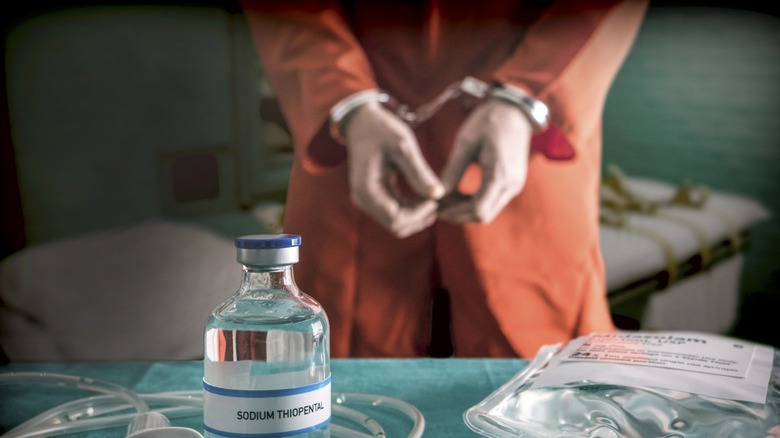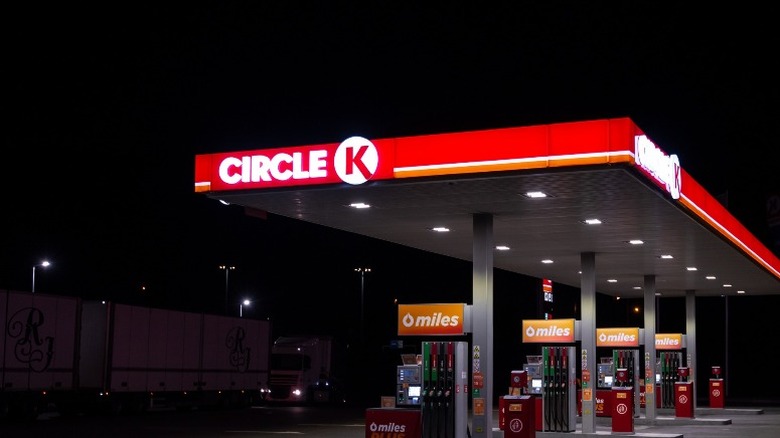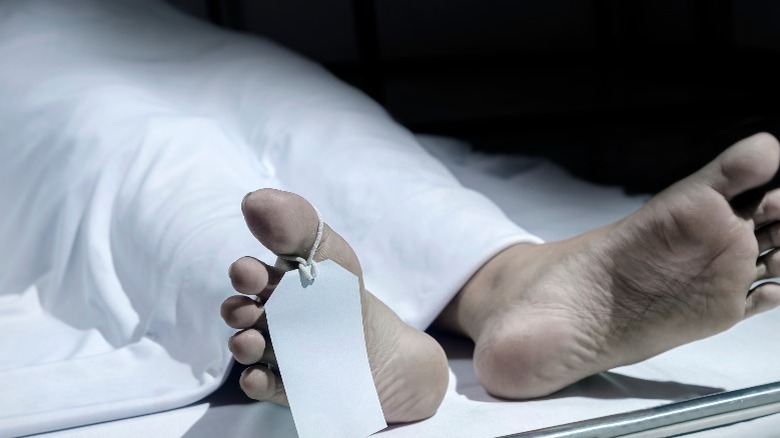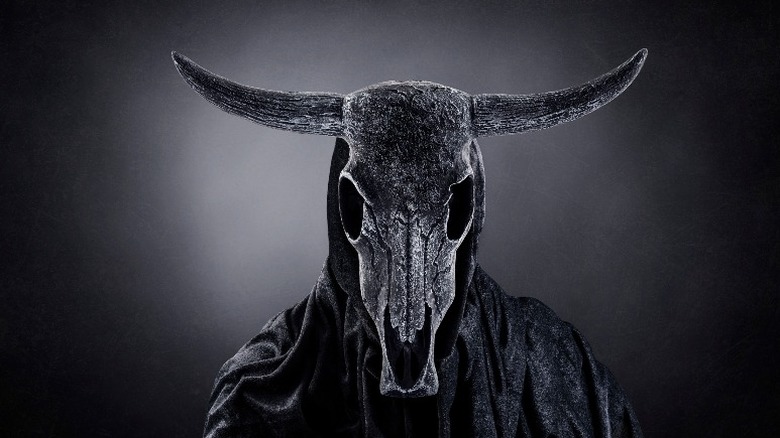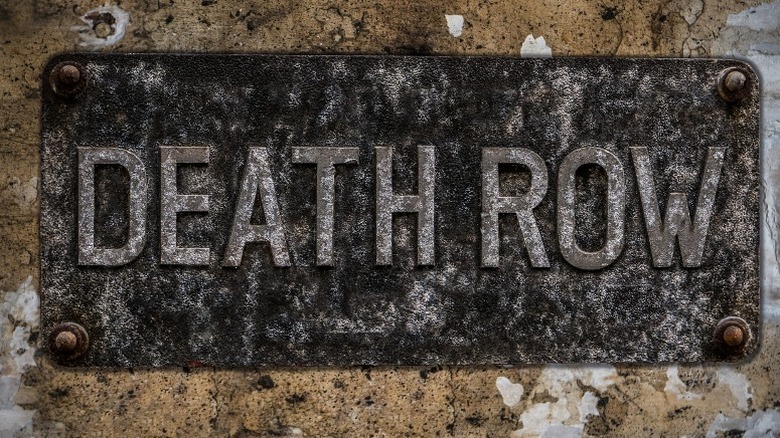This 16-Year-Old Killer Was The Youngest Sent To Death Row Since 1973
Since the 1976 reinstatement of the death penalty in the United States, hundreds of convicted men and women have been forced to meet their maker at the hands of various state governments. The Death Penalty Information Center reports that over 1,500 executions have been carried out in that span, with the bulk of them coming from Texas, Virginia, and Oklahoma. In a 2014 Washington Post report, it was revealed that of these condemned prisoners, 22 of them were convicted of committing the crimes that sent them to death row before they were 18.
Though the 2005 U.S. Supreme Court ruling in Roper vs. Simmons prohibited any state from sentencing and carrying out any death sentence already handed to defendants who were minors at the time of their offense, it came six years too late for one convicted Oklahoma killer who went to the execution chamber on February 4, 1999. On that date, 29-year-old Sean Sellers was put to death via lethal injection for three murders he committed in 1985 and 1986 (per the Los Angeles Times). Sixteen at the time of the slayings, this made Sellers the only person in the United States to have their death sentence carried out for a crime committed while they were under 17 since 1973 (via the Death Penalty Information Center).
Sellers' story is one of a deeply disturbed young man who committed horrific acts of violence during the peak of the satanic panic era of the 1980s. And while the verifiably false elements of the satanic panic seemed to take center stage during Sellers' trial, the facts behind the case paint a picture of mental health that is arguably ignored.
He first killed a clerk at a convenience store
On September 8, 1985, Sean Sellers and his best friend Richard Howard entered the Circle K convenience store in Oklahoma City (per Murderpedia). Sellers pointed a .357 revolver at the man behind the counter, 35-year-old Robert Bower. The Oklahoman reports that Sellers opened fire and took Bower's life in an act of cold blood. Sellers giggled uncontrollably after the deed was done, stating later that the incident was "like ... a fantastic prank," as Bowers had no idea that Sellers had shown up that night to murder him.
Of his friend's murderous act, Howard would go on the record claiming that Sellers pulled the trigger because he was curious about what it would feel like to kill another person. But after Sellers was eventually arrested, he and his friend had differing accounts as to what happened that fateful night. Howard contended that he was not inside the store when the lethal shots were fired, while Sellers maintained that Howard was an active participant in the murder. In an interview with People (via The Oklahoman), Sellers claimed that Howard blocked Bower from exiting and screamed at Sellers to "do it."
Bower's murder was investigated, but few leads materialized. It wasn't until after Sellers killed again that police were able to link him to a case that had been quickly growing cold.
His victims included his mother and stepfather
Hours after Vonda and Paul Bellofatto went to bed, Sean Sellers crept into their bedroom armed with a handgun. While his mother and stepfather lay sleeping, Sellers, clad only in his black underwear, shot both of them in the back of the head with a single round. The Oklahoman reports that Sellers had to fire one additional shot at his mother as the woman stirred and began to rise after the first.
Sellers was reportedly angry at his mother for not allowing him to see his girlfriend, a woman who Vonda Bellofatto felt wasn't a good influence on her son. Intending to stage the double murder as one committed by an intruder, he was planning on faking surprise when he "discovered" their bodies the next morning. Shortly after the execution-style murders, Sellers left his home, went to see Richard Howard, and confessed to the killings (per Justia).
The police who responded to the scene didn't appear to have any issue connecting Sellers to the murders of his mother and stepfather. As their investigation began to develop, Sellers revealed details about his motives that are as bizarre as they are chilling. The admissions made by Sellers are still subject to debate nearly 40 years after the murders and are linked to one of the more wild zeitgeists of the era — one that was later dubbed the "satanic panic."
'The devil made me do it'
Sean Sellers told police that before the murder of his mother and stepfather, he had been a practicing Satanist, performing rituals that sometimes involved drinking his blood (via Amnesty International). His defense attorney used Sellers' story of a boy overcome with satanic influence at his 1986 trial. A psychiatric expert testified on his behalf and said the killer — who told police that he had no recollection of the murders — should not be held legally culpable for the crimes. Additionally, his defense counsel attempted to argue that Sellers was driven to kill by the popular role-playing game "Dungeons & Dragons," which made him unable to connect his actions to real-world consequences (per Justia).
The old-fashioned "the devil made me do it" defense didn't play out well for the jury. Sellers was convicted on three charges of first-degree murder and sentenced to die. In exchange for his testimony against Sellers, Richard Howard was given a five-year suspended sentence.
Sellers became a born-again Christian while incarcerated
Like many who are condemned to spend the rest of their days behind bars, Sean Sellers turned to religion. In a 1988 prison interview with TV host Geraldo Rivera, Sellers was asked if he believed in the devil. Sellers responded that though he believed in the existence of the evil deity, he no longer worshipped it. "I'm a Christian," he told Rivera (per Tribune Entertainment). "I stand up boldly and proudly and proclaim my faith in Jesus."
While awaiting execution, Sellers gave interviews to daytime talk shows, "48 Hours," and MSNBC. He also appeared in multiple documentaries about both Satanism and capital punishment (per Wickedness). In an attempt to spread his ministry, Sellers gave in-prison interviews with ministers who were motivated by the Sellers case and wanted to use it as a precautionary tale to parents. But not everyone was sold on the idea that Sellers was a true convert. The family of his murdered stepfather never believed Sellers' conversion was sincere. And several prison officials maintained that Sellers was a master manipulator, a cold-blooded killer whose demeanor was radically different whenever he was in the company of someone from the Christian community (via The Oklahoman).
He was executed in 1999
Despite evidence that Sean Sellers was plagued with a myriad of mental health disorders, he lost every appeal to the courts to spare his life (per Amnesty International). The mental abuse Sellers suffered at the hands of family members, the revelation that he had been hearing voices in his head since he was 6 or 7, and the traumatic head injury he suffered when young did little to sway the legal system. At the age of 29, Sellers was put to death by lethal injection on February 4, 1999.
His age at the time of the murders, coupled with his serious mental health disorders, led to his execution getting some heavy attention from death penalty opponents. Among those who petitioned then-Oklahoma Governor Frank Keating were the American Bar Association and Desmond Tutu. Before the fatal doses were administered, Sellers had the opportunity to address those who had come to witness his execution. To them, he stated (per The Oklahoman), "All the people that are hating me right now and are here waiting to see me die, when you wake up in the morning, you're not going to feel any different. You're going to hate me just as much tomorrow as tonight."
With that, he let his last words linger while he began to sing the hymn "Set My Spirit Free," the last words to leave his lips before the cocktail of drugs made him permanently slip into unconsciousness.
If you or someone you know needs help with mental health, please contact the Crisis Text Line by texting HOME to 741741, call the National Alliance on Mental Illness helpline at 1-800-950-NAMI (6264), or visit the National Institute of Mental Health website.
